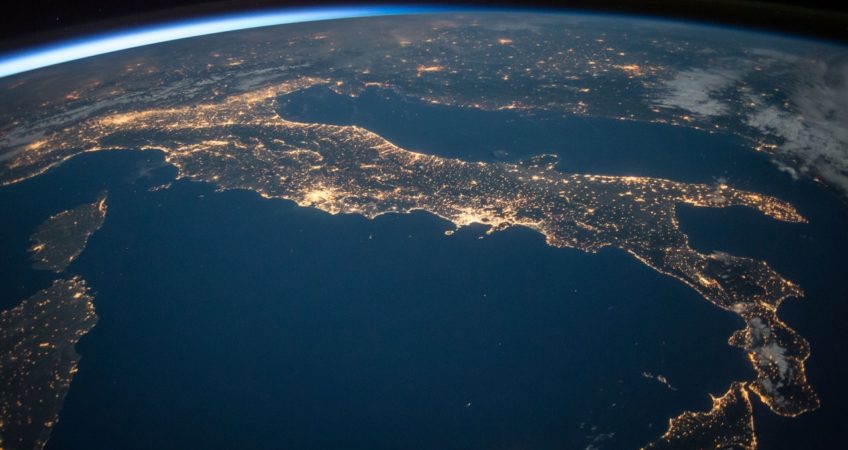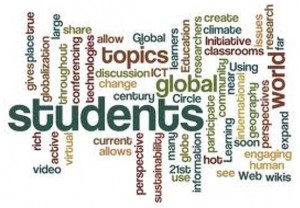How can we educate our children to be citizens of the world? This question is one that parents and educators are considering, particularly this summer amid such tumultuous times in our country and the world-at-large.
Every day we and our children have real-time opportunities to share our thinking while engaging with one another — whether it’s how to welcome new neighbors on the block, explain our attitudes toward immigration policies debated in Congress, or provide background and context to our children as a 24/7 news cycle presents nonstop updates and images of global conflicts.
Harvard Graduate School of Education (HGSE) Professor Fernando Reimers recently spoke about global education to HGSE alumni in New York. Reimers, who is also director of the International Education Policy Program at HGSE, knows about the nuts and bolts of educating kids. He is a parent and a professor; he also developed the World Course (global studies) curriculum for the Avenues School, a private school in New York City devoted to making its students global-minded citizens of the world.
Because we live in such an interdependent and connected world, global curricula are now being designed and evaluated to ensure that they are relevant. This is a welcome development because our children need knowledge and flexible, adaptive tools to become successful in an interconnected society. Since learning happens through both formal pedagogy and outside of the classroom, parents and teachers alike can foster global awareness in meaningful ways.
A GLOBAL EDUCATION CURRICULUM – BRIDGING THEORY AND PRACTICE
Reimers believes that global education should begin at a very early age, pre-school even, where we explain to children what we think they should care about and why. We should help them understand their role as global citizens by having world education as part of the core curriculum. Regardless of age, Reimer says there are three attributes that enable a child to become globally competent – knowledge, skill, and effectiveness.
KNOWLEDGE
We need to know and understand the history of the world but we also need to understand contemporary life, global opportunities and challenges, and how expansive yet small our world really is. Reimers breaks global knowledge into three parts:
- •A positive disposition toward cultural difference, that is, an interest and understanding of different civilizational streams and the ability to see them as opportunities for constructive transactions among people. These are soft skills (and attitudes) that reflect an openness to and curiosity about the variation of human cultural expression reflected internationally. In their most basic forms, these skills comprise tolerance toward cultural differences.
- •An ability to speak, understand, and think in languages in addition to the dominant language in the country in which people are born. Foreign language skills are analogous to stereoscopic vision to the global mind.
- •Deep knowledge and understanding of world history, geography, of the global dimensions of topics such as health, climate, and economics, and of the process of globalization itself.
Schools like Avenues are focused on providing this knowledge base and increasing consciousness of what a more integrated world means.
“Even though living in a highly interdependent world is not an option, being educated to do so competently is,” Reimers reminds us.
SKILL
“Young people learn much from schools, but what they learn is not only in their lessons. Teachers and administrators must learn to model the skills we want students to develop, such as good environmental practices, participatory decision-making, and the control and prevention of violence through reporting policies and clear codes of conduct,” says the UN’s Global Education First Initiative. Developing skills comes in two parts: theory and practice. Eating tacos or sipping Thai iced tea at a school’s international fair day doesn’t constitute a comprehensive international education program.
At Queens Paideia School (QPS) in Long Island City, NY, cultivating global awareness is a key component that is integrated into students’ daily experience. QPS Assistant Director Karyn Slutsky says, “Even our youngest students learn about concepts like culture (including beliefs), natural resources, and geography, along with their impact on human relations, other species, and the environment. They learn about history all over the world but they also learn about their own community, and how they can effect positive changes through small steps and effective communications. It’s a multifaceted approach—loaded with modeling, practice, and reinforcement—that seeds our students to notice and consider more of what is around them, on the local level and more expansively, and also what is inside them.”
Early childhood educators note that parents are the child’s first and most critical teachers. Nancy Schulman, Head of Early Learning Center at Avenues, and Ellen Birnbaum, Director of the 92nd Street Y Nursery School (co-authors of Practical Wisdom for Parents) note that, “It is never too early to teach good behavior,” whether by modeling a respectful but definite code of ethics or by reinforcing children’s acting in a spirit tolerance, collaboration, and kindness.
This sort of skill-building parallels a child’s growth of critical thinking skills; children learn how to use knowledge they have acquired to consider an issue from various vantage points. As problem-solving skills grow, children can learn how to think about different perspectives, appreciate these distinct points of view, and analyze them while still communicating their own beliefs in a tolerant and respectful manner. This is a particularly important function for American children who are working toward becoming world citizens. Kids in the United States have the greatest access to information, and therefore they have the opportunity and responsibility to represent the country’s ideals of democracy.
EFFECTIVENESS
The UN’s Global Education First Initiative says, “Change is possible when educators adopt a vision of ethical global citizenship. … explicitly teaching good citizenship as a subject can have powerful results with more empowered and ethical students emerging. Deeply entrenched beliefs take time to change. But young people are open to new perspectives, and schools are ideally positioned to convey them.” Parents, too, are ideally positioned to model and reinforce desirable attitudes and behaviors toward the goals of global awareness and character development.
Riemers’s three attributes for global effectiveness are useful for parents and educators to keep in mind. Learning about other societies and cultures is a developmental process, just like learning to read or developing time management skills or tennis skills. Learning to appreciate, see the value in, and have respect for other nations, religions, customs, habits, and beliefs is a long-term process that we should help our children cultivate and navigate so they can better understand the world and the role they can play in making it better and more balanced.
As Reimers pointed out in his speech, we — educators and parents — should be teaching our children “the capacity to understand globalization, anticipate risks, manage them, and seize and create opportunities in a highly integrated global economic context.”
How much international knowledge do you have? Try this brief online quiz to gauge your own general knowledge of the world.
Stay tuned for our next post: Tips to help your child become a global citizen.



